Changes to the Canada Emergency Wage Subsidy (“CEWS”) Program
The federal government introduced Bill C-20 on July 20. The bill received Royal Assent on July 27 and is now law.
Bill C-20 introduces substantial legislative changes to the CEWS program. The changes are so dramatic that we advise our clients to treat the changes as a new, separate wage subsidy – “CEWS 2.0” as many in the industry are calling it. For this reason, it is critical that anyone seeking to claim benefits under the new rules revisits their eligibility and makes the appropriate adjustments to the calculation of the benefits they are claiming.
The eligibility criteria and subsidy calculations are completely different for CEWS 2.0. Employers who were not eligible for the original CEWS subsidy may be entitled to benefits under CEWS 2.0.
Please note that the following is a brief summary of the rules and does not fully encompass all of the technical nuances of the new legislation. The new CEWS 2.0 rules are very complex.
The complete legislation can be found here.
CEWS 2.0 – Highlights
CEWS 2.0 is in effect July 5, 2020 until November 21, 2020 but may be extended up to December 31, 2020.
CEWS 2.0 is calculated in two parts – Base CEWS and Top-Up CEWS:
- Base CEWS is calculated based on the employer’s revenue decline for the particular month;
- Top-Up CEWS is calculated based on the employer’s revenue decline over the last 3 months; and
- There is a “drop-in” provision which can help maximize the CEWS claim.
Employers may choose a new comparative period for CEWS 2.0.
CEWS 2.0 will continue to be capped at weekly wage amounts of $1,129.
The “eligible employee” criteria for CEWS 2.0 has been expanded:
- the “14-day” requirement has been removed.
- It is easier for non-arm’s length employees to qualify for CEWS 2.0.
The wage subsidy for employees on paid leave will be reduced to align benefits with CERB/EI benefits.
There is a “safe harbour” rule which will allow employers to use the old CEWS rules until August 29, 2020 if they are entitled to a larger subsidy under the original 75% CEWS subsidy.
Amount of CEWS 2.0 Subsidy
The amount of the CEWS 2.0 subsidy will vary depending on the employer’s revenue decline in a particular month. As well, the amount of the CEWS 2.0 subsidy will decline with each progressing period. The CEWS 2.0 subsidy, in various scenarios, is illustrated below.
| CEWS Period | Subsidy with 30% revenue decline* | Subsidy with 50% revenue decline* | Subsidy with 70% revenue decline* |
| July 5 –
August 1 |
36% Base CEWS (30% revenue decline * 1.2) | 60% Base CEWS (Full Base CEWS at 50% revenue decline) | 85% (60% Base CEWS + 25% Top-Up CEWS – full Top-Up CEWS at 70% revenue decline) |
| August 2 – August 29 | 36% Base CEWS (30% revenue decline * 1.2) | 60% Base CEWS (Full Base CEWS at 50% revenue decline) | 85% (60% Base CEWS + 25% Top-Up CEWS – full Top-Up CEWS at 70% revenue decline) |
| August 30 – September 26 | 30% Base CEWS (30% revenue decline * 1) | 50% Base CEWS (Full Base CEWS at 50% revenue decline) | 75% (50% Base CEWS + 25% Top-Up CEWS – full Top-Up CEWS at 70% revenue decline) |
| September 27 – October 24 | 24% Base CEWS (30% revenue decline * 0.8) | 40% Base CEWS (Full Base CEWS at 50% revenue decline) | 65% (40% Base CEWS + 25% Top-Up CEWS – full Top-Up CEWS at 70% revenue decline) |
| October 25 – November 21 | 12% Base CEWS (30% revenue decline * 0.4) | 20% Base CEWS (Full Base CEWS at 50% revenue decline) |
45% (20% Base CEWS + 25% Top-Up CEWS – full Top-Up CEWS at 70% revenue decline) |
* The actual subsidy amounts may vary as Top-Up CEWS is calculated on a three-month rolling average basis.
Quick Pros and Cons
Pros:
- CEWS 2.0 will be available at least until November 21, 2020. Extension to December 19, 2020 has been announced, but not legislated.
- CEWS 2.0 will be available when there is any revenue decline in a particular month from the comparative period.
- The original 75% CEWS subsidy will continue to be available until August 29, 2020.
- The eligibility criteria for employees has been expanded, and all employees (including non-arm’s length employees) should be eligible for CEWS 2.0.
- A new comparative period is available for July 5, 2020 onwards. This is applicable even for employers who are applying for the original 75% CEWS subsidy until August 29, 2020.
Cons:
- The CEWS 2.0 subsidy will generally be much lower than the 75% CEWS subsidy.
- The maximum subsidy available is eroded in each period.
- Although the details have not been finalized, there will likely be no benefit for employers to retain employees on paid leave after August 29, 2020.
- The CEWS 2.0 rules are more complex than the previous rules
Walsh King Assistance
Chris Reimer, senior manager in our assurance group, is coordinating our CEWS task force.
Chris and our team have assisted several clients in successfully applying and receiving funds under the CEWS program. The Government has accelerated payments to be paid under this program and we are now seeing our clients receive payment within a few days of their application.
If you have made an application but have not yet received funds, please contact us.
There are numerous technical issues within the rules. We would be happy to assist with the application process.
We will talk soon.
Posted in COVID-19


